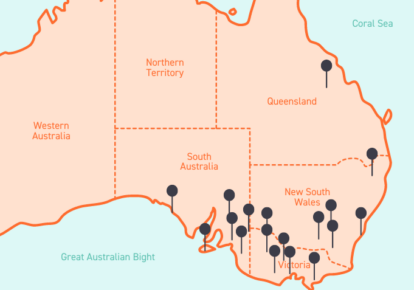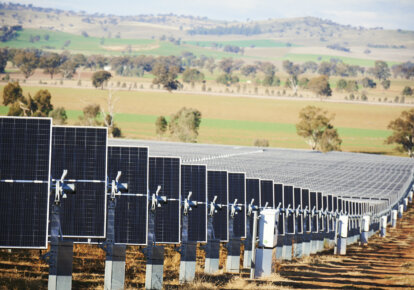Michell Wool cuts costs with intelligent energy asset automation
Case study overview
Michell Wool is Australia’s oldest and largest exporter of Australian wool fibre.
Flow Power designed an intelligent demand response strategy for its Australian manufacturing and processing operations, helping reduce exposure to high price energy events and minimise strain on the local grid.
Powering Michell Wool’s specialist operations
Michell Wool is a sixth-generation family company, processing and exporting wool for more than 150 years.
Its specialist facilities in South Australia include a 2m carbonising line with 12 million kg of annual capacity, plus a 2m scouring line.
Flow Power has been powering its processing facilities since 2018 through a Power Wholesale electricity contract.

Building intelligent demand response
As part of South Australia’s Demand Management Trials Program, Flow Power was selected to deliver cost-effective demand response solutions for South Australian businesses, using bespoke technology. The program aimed to address the fragility of South Australia’s grid system and protect it from outages, while rewarding customers for managing their own demand.
Michell Wool is one of 40 South Australian businesses Flow Power worked with in the program to develop custom demand respond systems, with bespoke technology, hardware and training, allowing sites and machines to automatically respond to market events.
By utilising critical site information and leveraging market prediction algorithms, Flow Power’s smart energy management hardware, kWatch, made these complex systems possible.
Smart strategy to save
Businesses like Michell Wool, with flexible operations, are well-suited to implementing a demand response strategy. This strategy helps avoid high price energy events, while taking advantage of low and negative price periods in the wholesale market.
In this instance, we considered the cost of continuing production during peak times or high-price events. For events where continuing operations would negatively impact profit margins, we power down production until wholesale prices stabilise. This can provide significant savings on overheads and increase product profitability with minimal operational impact.
This strategy is cost-effective for customers, and also reduces local grid strain during high-price, peak demand periods.

How does energy asset automation work?
Each system managed by Flow Power is tailored to its specific control needs. For Michell Wool, the system is calibrated to control the shutdown and power-up sequence of factory machinery.
When a high-price event occurs, exceeding $1,000/MWh, kWatch sends market signals to the Supervisory Control and Data Acquisition (SCADA) system, either triggering a shutdown or asking the customer if they want to participate in the event.
Once the event has finished and prices have stabilised, kWatch signals the SCADA system to power up again.

Putting the smart system into practice
The graph to the left shows Michell Wool’s response to a high-price event in February 2023.
In this year, Michell Wool participated in approximately 20 hours of demand response, resulting in a 5% reduction on total annual electricity costs.

During the trial in August 2023, Michell Wool achieved a 41% reduction in energy costs for the month, relative to the high price period, with minimal operational interruption.
Additionally, the success of the intelligent demand response system shortened the payback period on integration costs and system upgrades from the estimated 2.9 years to just 1.3 years.
Demand response promotes market stability and reduces strain on the local grid. It also helps prevent the need for local electricity infrastructure upgrades.
The energy mix available in the grid during periods of low-price and low demand is typically made up of a higher proportion of renewable sources.
This means the energy used is often less carbon-intensive than energy used at peak periods, when thermal generation is at its highest to meet demand.
Intelligent demand response automates power redundancy and resilience into business operations and processes, helping reduce or completely remove the need for manual operation of assets.
The Flow Power team received the SIM-PAC Live 2024 ‘Electrification in Action Award‘ for their work in energy efficiency and electrification with Michell Wool. Learn more about our awards here.

Speak to Flow Power’s business electricity specialists about the right solution for you.
Get in touch today.







